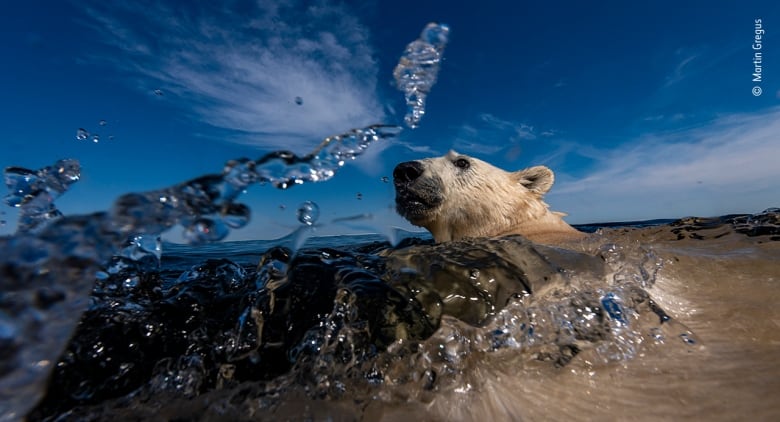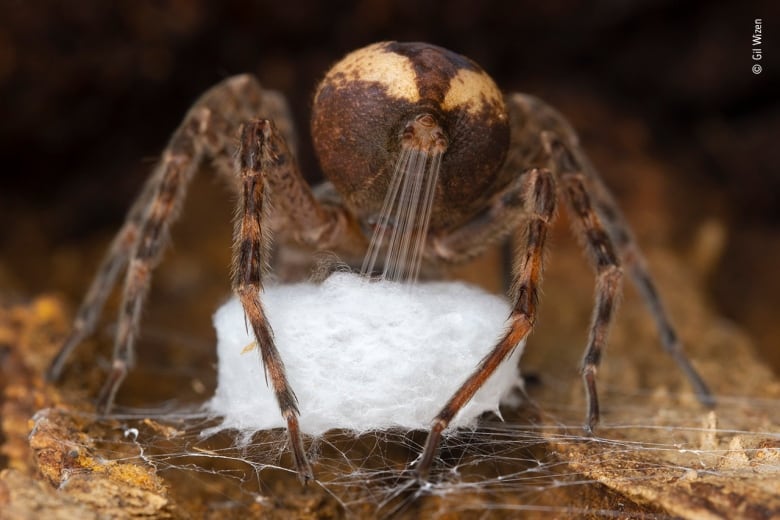Stunning polar bear, bird portraits earn Canadians Wildlife Photographer of the Year awards | CBC News
Intimate photos that provide a rare window into the lives of polar bears, birds and insects have earned several Canadians recognition in this year’s Wildlife Photographer of the Year Awards.
The winners of the 2021 edition of the annual competition, developed by the Natural History Museum in London were announced Tuesday evening. This year’s competition drew 50,000 entries from 95 countries.
The grand prize winner was “Creation” by French underwater photographer and biologist Laurent Ballesta. It features camouflage groupers leaving their annual mating frenzy under a full moon in a lagoon in Fakarava, French Polynesia.

Intimate moments with animals
Several Canadians won awards in different categories.
Martin Gregus of Vancouver, B.C., won the Rising Star Portfolio Award, for photos of polar bears enjoying the summer in Hudson Bay, including a mother napping with a cub who is missing a leg and two adult females playing together in the shallow water.
“These bears really did share with us many intimate moments and they shared their story with us,” he said. “In doing so, they allowed us to sort of share it with the world.
Gregus and his team of two others were invited by a tourism company to scout out a new area near Churchill, Man., during the tourism lull caused by the pandemic in 2020. “It was an amazing opportunity,” he recalled.
He said that while people are used to seeing polar bears in the snow or starving bears in the summer, he wanted to show the resilience of a population that has adapted to this region and climate by hunting prey such as terns and marmots and eating flowers instead of just hunting seals.
“I want them to see the resilience of the polar bear … given the opportunity and given our protection of their landscape.”

‘Step outside and look’
Gil Wizen of Mississauga, Ont., received recognition for four photos.
“Spinning the cradle,” captured along the Credit River near his home, won the Behaviour: Invertebrates category. It features a mother fishing spider weaving its egg sac.

“The spider room” won the Urban Wildlife category. It features a larger-than-life portrait of a female Brazilian wandering spider, one of the world’s most venomous, that he found under his bed while working as an entomologist in Ecuador.

Two more of his photos were highly commended in the Behaviour: Invertebrates category.
“Beautiful bloodsucker” featured an ornamented mosquito as it fed on his knuckle.

7:24How a Canadian photographer captured this stunning image of a dangerous mosquito
When entomologist Gil Wizen took photos of a mosquito biting his knuckle, he wanted to show how beautiful it can be. Now his photo of the tiny metallic-coloured insect has been honoured in the Wildlife Photographer of the Year competition. 7:24
“Big filling station” captured a stink bug nymph sucking the blood out of a caterpillar.

Wizen said all the photos represented several hours of work, and some of them a certain amount of hazard. He found the mother Brazilian wandering spider on a trip in 2014 after he noticed baby spiders all over the room and searched for their nest. He decided to use a wide-angle lens to capture a corner under the bed to make it feel human-sized. The resulting photo went viral online.
He said his goal is to make people stop and think and to recognize the diversity of life around them, including small and overlooked animals in places like the Toronto area where he photographed the fishing spider.
“You don’t have to travel far,” he said. “You just have to step outside and look.”
Giving a voice to nature
Shane Kalyn of Vancouver, B.C., won the Behaviour: Birds category with an intimate portrait of two courting ravens.
He took the photo in early February in 2019 at Mount Seymour, a local ski resort he visits every year at that time to watch the ravens’ unique courtship behaviours. He said humans can get quite close to the birds because they’re so focused on each other.
In this photo, the amorous couple was taking turns inspecting around and inside each others’ beaks, something Kalyn had never seen before. He acknowledged the photo doesn’t capture the full experience.

“The best part … is the whole time they were clearly talking to each other in that raven language,” he said. “It was really cool to see.”
He said his goal with photography is to show the beauty of nature. “It’s at a time where we need to start giving a voice.”
Celina Chien’s photo “Imprisoned” was highly commended in the Photojournalism category. It features an orangutan gripping the bars of its cage while standing upright with its head bowed at a zoo in Yunnan, China.
Chien, who was visiting the zoo on her day off while working on a conservation photography project in the region, saw the animal, a tree-dweller that almost never stands on the ground, as begging for freedom.

“I took the photo basically, because what else could I possibly do? It’s the only thing I could think of doing where I knew that I could do something to help — not only him, but also all non-human animals in captivity,” said Chien, who currently lives in the U.K. She has Canadian citizenship from her Chinese-Canadian father, but has never lived in Canada.
Nichole Vijayan of Oakville, Ont., captured a highly commended photo in the 11-14 years youth category. “Bluebird morning” shows an eastern bluebird feeding its chick at sunrise near her home. Vijayan is the sister of one of last year’s winners, Hannah Vijayan, and daughter of wildlife photographer Thomas Vijayan

The entire exhibition can been viewed at the Royal Ontario Museum in Toronto from Nov. 13, 2021 to April 18, 2022.
For all the latest Technology News Click Here

